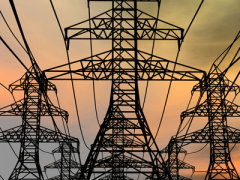INDCs signal unprecedented momentum for Climate Agreement in Paris
INDCs are projected to reduce greenhouse gas emissions in 2030 by up to 6 gigatonnes of CO2e, but 12 extra gigatonnes are needed to keep warming below 2° C. Existing policies and strong engagement by nations submitting their Intended Nationally Determined Contributions (INDCs) ahead of the Paris climate meeting will limit anthropogenic greenhouse gas (GHG) emissions by 2030, but a new climate agreement can encourage further action to limit global temperature rise to 2° C by 2100, according to a new United Nations Environment Programme (UNEP) report.
The UNEP Emissions Gap Report is an authoritative assessment undertaken by a team of leading scientists and modelling experts from around the world. Michel den Elzen of PBL Netherlands Environmental Agency was one of the lead authors of the INDC assessment chapter. The report presents an assessment of the 119 Intended Nationally Determined Contributions (INDCs) submitted the UN Framework Convention on Climate Change (UNFCCC) by 1 October 2015, covering 146 countries (including the European Union submitting as a bloc) and up to 88 per cent of global GHG emissions in 2012.
The INDCs represent GHG emission reductions of 4 to 6 gigatonnes of carbon dioxide equivalent per year (GtCO2e/yr) in 2030 compared to projected emissions under current policy trajectories. 2030 projections based on current policies are themselves 5 GtCO2e per year lower than the estimate of 65 GtCO2e, based on the Intergovernmental Panel on Climate Change's Fifth Assessment Report scenarios, which assumed no additional climate policies are put in place after 2010.
This indicates that efforts to tackle climate change, including those taken before the Paris agreement and full implementation of the INDCs, could cut up to 11 GtCO2e from projected emissions in 2030. This is however around half of the total required to reach the global emission level of 42 GtCO2e in 2030 consistent with having a likely chance (>66 percent) of staying below the 2°C target in 2100.
The challenge is to bend the emissions trajectory down as soon as possible to ensure that the net zero emissions goal in 2060-2075 is within reach. With regard to the various potential scenarios for the emissions gap in 2025 and 2030, the report finds the following.




